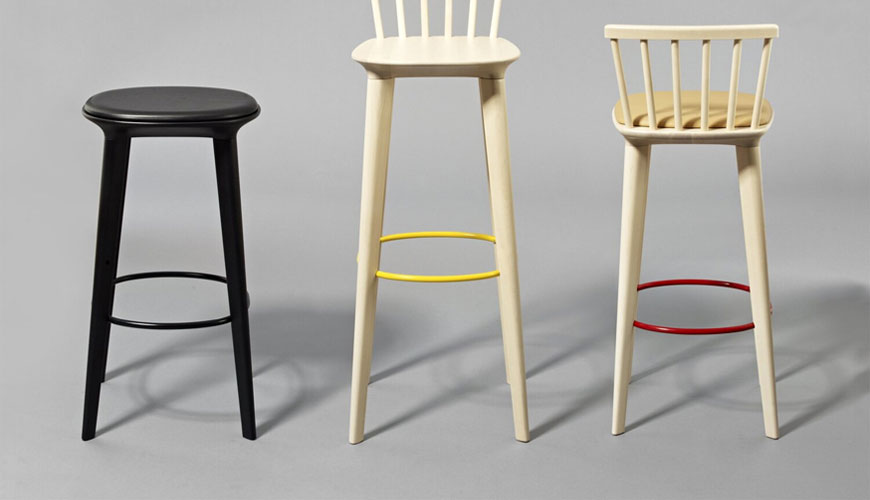

Developed by the International Organization for Standardization (ISO), the ISO 7173 standard describes test methods to determine the strength and durability of all types of chairs, comfortable chairs and stools. Additional testing of chairs may be required for certain chair types and certain areas of use. Such test methods will be described in future International Standards. For the purposes of this International Standard, ottomans are considered stools.

Aging and deterioration assessment is not included. The tests are not intended to evaluate the durability of filling materials, upholstery fabrics or foam pillows.
This International Standard does not include tests for reclining or reclining chairs. The tests are designed to be applied to a fully assembled and ready-to-use piece of furniture.
The forces and dimensions in the tests are applicable to adult chairs and stools.
Testing consists of the application of loads or forces simulating normal functional use to various parts of the object, as well as misuse that can reasonably be expected to occur.
The tests are designed to evaluate properties regardless of material, design/construction or manufacturing processes.
Test results are valid only for the tested product. When the results are intended to be applied to other similar articles, the test sample should represent the production pattern.
In the case of designs not included in the test products, the test should be performed as described as far as possible and any deviations from the procedure should be recorded in the test report.
Testing performed according to this International Standard is intended to demonstrate the ability of the part to provide satisfactory service in its intended environment. It should be understood that such testing does not ensure that structural failure does not occur after habitual misuse or an excessively long service period, or after occasional use by persons weighing more than 100 kg.
ISO 7173 Test Method
There are two methods to perform the tests.
Preliminary
Before any of the tests are started, the part must be old enough to ensure it has developed its full strength. In the case of bonded joints in wood and the like, at least four weeks should have elapsed between production and testing under normal indoor conditions. See also item 8 for a preliminary note of existing defects.
If a standardized atmosphere is to be used for conditioning, it should have a temperature of 554 ± 23 °C and a relative humidity of (2 ± 50) % according to ISO 5.
Furniture will be tested as delivered. If it is disassembled type, it must be assembled according to the instructions supplied with the furniture. If the furniture can be assembled or combined in different ways, the most unfavorable combination will be used for each experiment. Knockdown fittings must be tightened prior to testing.
Application of Forces
Forces in strength tests should be applied slowly enough to ensure that negligible dynamic load is applied. Forces in endurance tests should be applied slowly enough to ensure that kinetic heating does not occur. It is recommended that tests be performed at a maximum rate of six cycles per minute.
upload
The intensity of the loading may vary according to the number of applications or the magnitude of the applied loads. As a guide, five test levels are given in the table based on the intended end use of the article.
Since the tests depend only on correctly applied loads and not on the apparatus, except for impact tests on which the apparatus will be used, the tests may be performed with any suitable device. The seat loading apparatus must be in such a way that it does not prevent the seat from tipping, tipping over, or hindering the horizontal movement of the seat when the back load is applied.
For tolerances, unless otherwise specified, the accuracy of all forces shall be ± 5%, the accuracy of all masses ± 0,5% and the accuracy of all dimensions ± 0,5 mm.
Among the services provided by our organization within the framework of material testing services, there are also ISO 7173 standard tests.
To get an appointment, to get more detailed information or to request an evaluation, you can ask us to fill in our form and reach you.